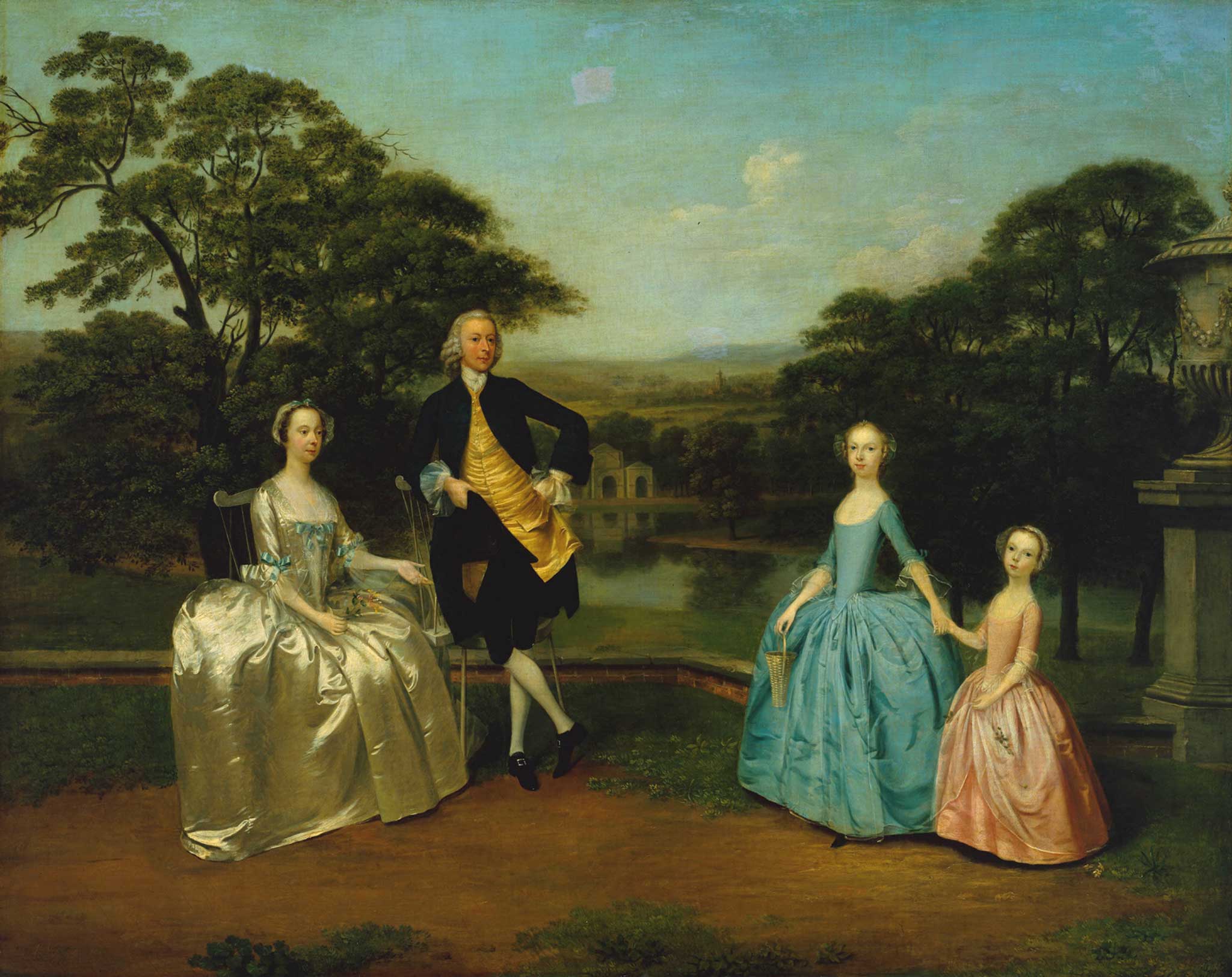Great Works: The James Family (1751) by Arthur Devis
Tate, London

In the wake of prosperity comes the immense burden of self-satisfaction. How to show off to the world that you are worthy of its admiration, that you deserve to be fêted among all the rest – not too many, thank goodness. Here is what we might call a choice variant upon an 18th-century "conversation" piece, a family in a soberly self-aggrandising mood of self-display, harmonious, regulated, never likely to be subject to the kind of riotous, sulliedly urban misbehaviour that the disgraceful Hogarth seemed to delight in showing.
No, there is nothing but a casually, carefully – but can we really mix the casual and the artful in this way? Oh yes – wrought elegance here. That in itself is interesting, that elegance of this kind can show itself as casual, not under any kind of threat of discomfiture or bad behaviour or bad manners. Everything is made possible – all this polite dissimulation of you like- by a kind of compact between painter and patron.
A pact has been reached that the painter shall show his patrons as both the custodians of nature – see how that estate sweeps away at their back, and how they part as if in a formal dance movement, two to the left and two to the right, adults and children, oh so carefully graded, to give us all an opportunity to savour this gorgeous, sweeping view, with its beautifully positioned folly at the edge of the manufactured lake in the middle distance, and its church on the far horizon, another bastion of propriety and regulated good governance. What a god this painter is! He has tidied any threatening clouds away from the sky.
In fact, look carefully at those clouds. They lack Constable's characterfulness. They are not really elemental players in their own right at all. They are too wispy, too easily forgotten. They are merely a small, constituent part of this gilded scene. He has also parted the trees – see how the tallest tree, on the extreme left of the painting, appears to sweep leftward as if in a kind of self-apologetic bowing gesture. Nothing about this tidy version of pastoral is at all unruly. Nature, in such a scene as this, is playing handmaid to its human proprietor. It does not have angry thoughts of its own.
Most of all, we are here to attend to the family – all the rest is scene-setting. There is such finery here. The artist has dressed them, prinked them, delicately prettified them until they stand before us as inert models of a species of social respectability that is as unbudgeable and dependable as the wood from which they seem to have been fashioned. It is a stage set, this. The parting of the family, two to the left and two to the right, seem to suggest this too. It is as if the scene is a painted backdrop, and that the family is here to take a bow beneath the splendid proscenium arch of a benevolent God's kindly sky for being quite so splendidly genteel and thoroughly agreeable.
Although there are children present here, there is no evidence of the refractoriness of childhood. Childhood has not yet been invented. These offspring are miniaturised adults, tiny scaled-down models, dressed in a similar fashion to the gilded matriarch. There is no wildness, no wilfulness, no errancy about these girls. They are masks of dutiful social decorum, as smooth and unblemished in their self-presentation as any couplet by Alexander Pope.
The faces of these people have been robbed of almost all expressiveness. No one smiles, no one blows a raspberry. They are all blended together and of a piece. And yet there is something that causes a slight feeling of tension – the improbable thinness of the legs and the chairs. Once again, they suggest delicacy, but they also cause ideas of extreme fragility to emerge. That which is so thin can so easily be broken. If we can set aside that slight twinge of unease aside, we all find ourselves agreeing – do we not? –that it is almost perfectly lovely.
About the artist: Arthur Devis (1712-1787)
Arthur Devis was a fashionable English landscape painter whose speciality was conversation pieces. Although he was fond of showing genteel families in the context of English landscape, complete with very particular topographical details, the painted backdrops were often synthetic and of Devis's own invention. In later life, having fallen out of favour as a painter for his old-fashioned stylistic mannerisms, he busied himself as a restorer. One of his more heroic achievements was to have fathered 22 children.
Subscribe to Independent Premium to bookmark this article
Want to bookmark your favourite articles and stories to read or reference later? Start your Independent Premium subscription today.

Join our commenting forum
Join thought-provoking conversations, follow other Independent readers and see their replies